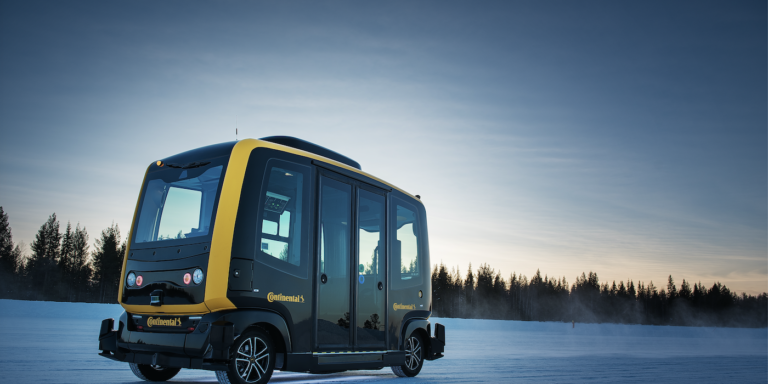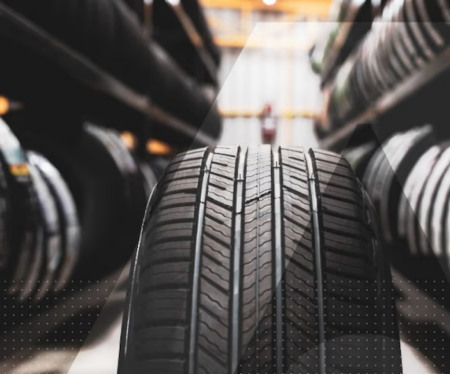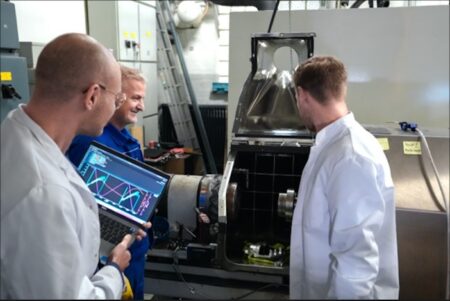Many predict that driverless ‘robo-taxis’ will become an important part of mobility in urban centres in the future, with these autonomous vehicles helping to reduce traffic congestion and increase efficiency by removing the scope for human error. However, while the technology needed to enable these innovative vehicles is almost entirely available on the market today, driverless transport systems of this kind are still rare. Small autonomous shuttle buses with room for several passengers – which also qualify as robo-taxis – have driven on short, straightforward public routes during pilot projects and in designated areas at airports, hospitals, universities and exhibition grounds. The robo-future may be getting closer though, following an announcement by Continental.
Researchers and developers across Continental’s sites in Europe, North America and Asia are working to make proven series-production technologies suitable for use in robo-taxis. Work is beginning in earnest this year, with Continental’s technology for driverless vehicles entering production for use in the EasyMile EZ10 autonomous shuttle. The central development platform for this work is the CUbE, a small driverless shuttle based on the EZ10 platform. According to Continental, the aim is not to develop the CUbE into a production vehicle, but rather to get a range of Continental technologies, such as brake systems and sensors market-ready so that they can be used in the series production of robo-taxis.
“The technological building blocks that enable robo-taxis to operate are available in principle and have been tried and tested in practice. However, we now have to intelligently, safely, and efficiently put them together to form an overall picture,” said Andree Hohm, director of driverless mobility at Continental.
Hohm added, “Customers developing driverless mobility systems should be able to draw from a wide array of high-performance products and solutions with Continental. We are setting the course for that. At the same time, our global activities are addressing local particularities.”
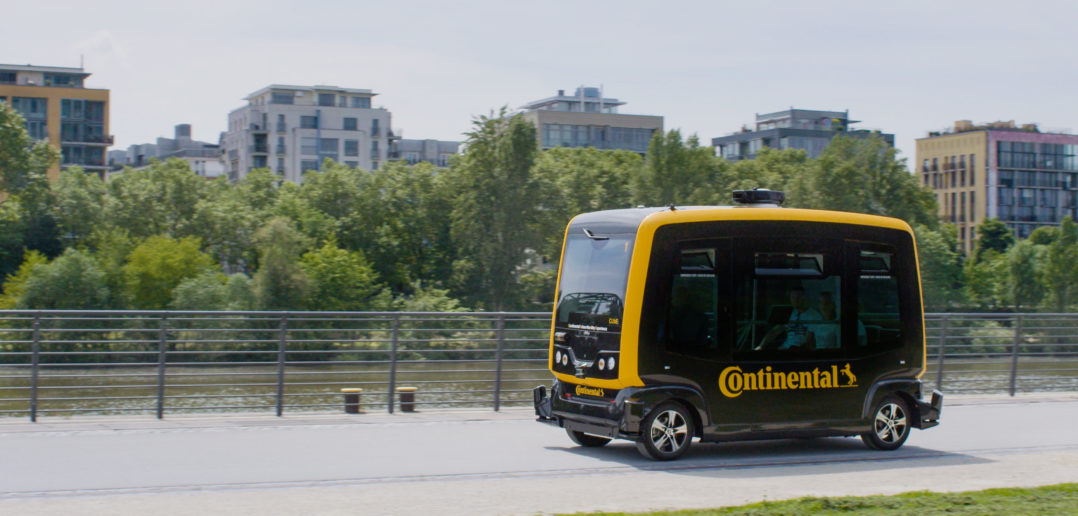
For a robo-taxi to drive autonomously, it must be able to detect its surroundings reliably and accurately, using sensors to monitor the vehicle’s surroundings, such as cameras, radar and lasers. With the aid of the CUbE, Continental has developed a production-ready radar system for driverless vehicles. The vehicle can generate a 360° image of its environment by combining the data from different sensor technologies. This in turn, ensures redundancy and a high level of accuracy, because radar systems function independent of visibility conditions and can even see through objects such as parked cars, and detect any street corner behind them.
Continental’s radar sensor, which will be used in the EZ10 autonomous shuttle from EasyMile later this year, detects the vehicle’s environment within a radius of up to 200m. The vehicle is equipped with seven radar sensors, as well as laser sensors and cameras, which allow the location to be precisely determined and, at the same time, enable early detection of obstacles and potentially critical situations. Field-proven products from high-volume car production are intelligently networked and adapted to one another to make them suitable for autonomous mobility.
Redundant brake systems and ABS functions
A dual safeguard, at minimum, is necessary for monitoring the surroundings in driverless vehicles, as well as the brake systems. According to Continental, it already has suitable technologies, such as the MK C1 one-box brake system, which has been in series production since 2016 and combines ABS, ESC and a brake booster. When used in autonomous vehicles, the one-box brake system is combined with a hydraulic brake extension that can, in conjunction with ABS, safely brake the vehicle in the event of primary brake failure to ensure full braking functionality.
In this new combination, the systems form the redundant and production-ready MK C1 HAD brake system for highly automated driving and for driverless mobility applications. Safety is further enhanced as the electromechanically generated maximum brake pressure can be achieved in just 150 milliseconds, meaning that automated vehicles without driver intervention can be brought to a standstill more rapidly than would be possible with conventional brake systems. The ABS function represents an additional feature, because robo-taxis have not been equipped with a system of this type until now. The technology will become especially important when driverless vehicles are on the road in wintry road conditions. Vehicle dynamics systems such as ABS, ESC, and traction control will enable vehicles to pull away safely on icy roads and provide maximum traction on slippery slopes or during braking.
In addition, some robo-taxis such as small buses are typically higher and have a higher centre of gravity than conventional cars to allow passengers to enter and exit the vehicle comfortably in an upright position. This is where a predictive driving dynamics system comes into play, to ensure stable handling in bends.
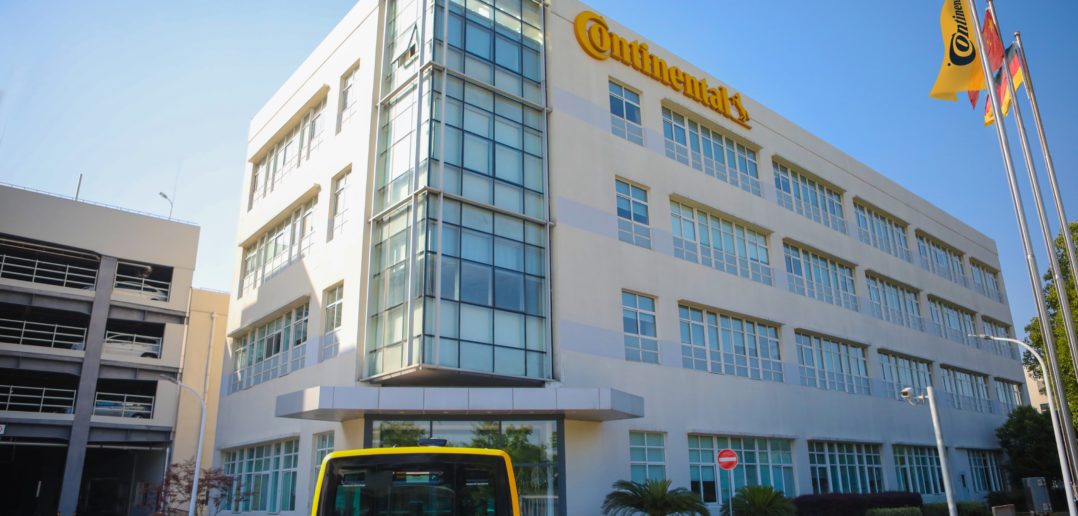
The development of Continental’s technologies for driverless vehicles is being advanced by its five centres of excellence, in Germany, China, Japan, Singapore and the USA. At these locations, research and development work is carried out with different emphases, but all make use of the CUbE platform and have the common goal of providing suitable technologies for future generations of safe and efficient robo-taxis.
So the technology is in production, but when will we begin taking robo-taxis? In closed-off areas, such as on a company premises or on special routes in clearly defined urban areas, driverless mobility services are already in operation today. However, Continental states that it is likely to take another decade or so before robo-taxis become a common sight in normal traffic, with numerous additional development steps necessary to make the vehicles safer and more suitable for everyday use. One of these development steps is real-life pilot operations where development opportunities for fully autonomous driving in urban areas are investigated.
As Andree Hohm said, “Driverless vehicles are a revolution, and this revolution will and must take place in evolutionary steps.”


